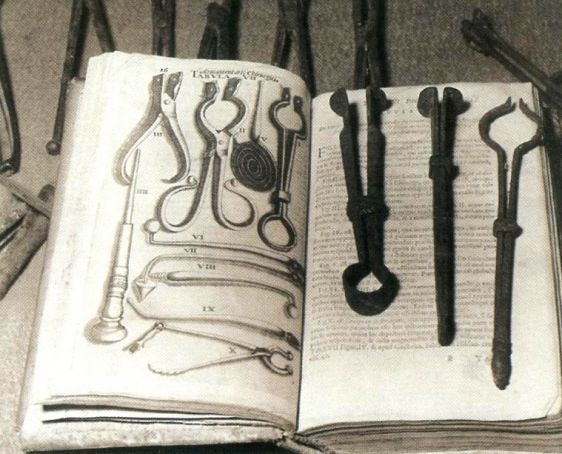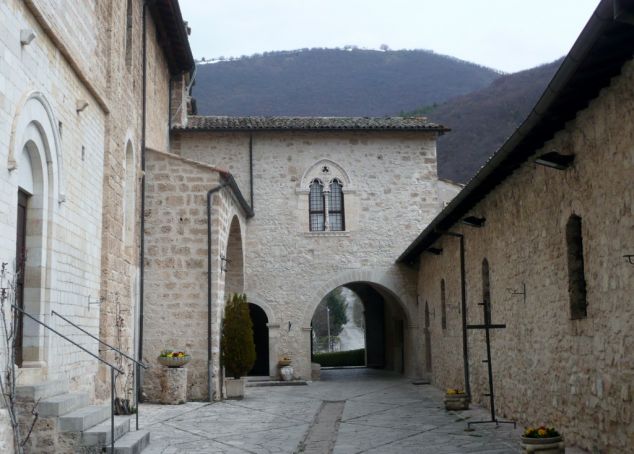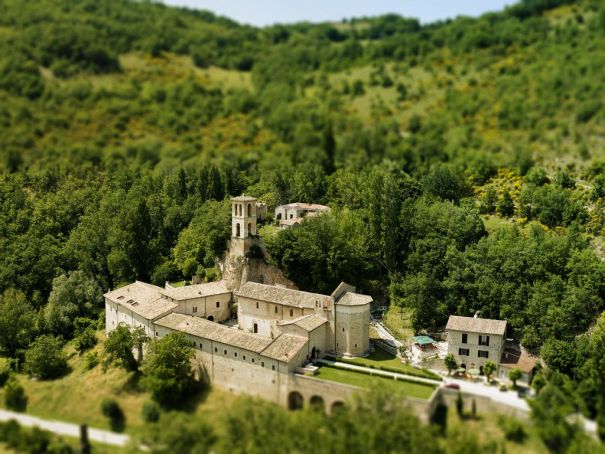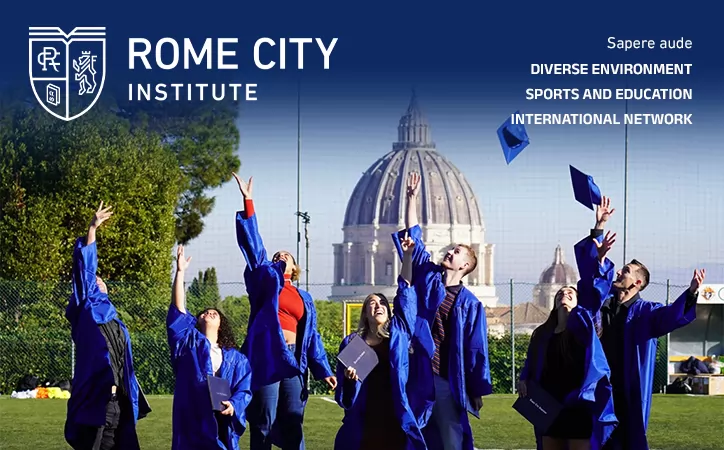For hundreds of years, a small village in a remote corner of Umbria produced many of Europe’s most celebrated doctors and surgeons.
The village of Preci lies at the northern end of the Monte Sibillini Park in Umbria. Perched among rolling hills, sweeping pastures and scatterings of small farms, it seems the unlikeliest place in the world to have spawned a school of celebrated surgeons whose skills were virtually unrivalled in Europe for almost five centuries.
Also read: Visiting Arezzo, where life is beautiful
Also read: All you need to know on Orvieto
Preci is one of Italy's many secrets, like the works of Renaissance masters in remote and crumbling country churches, the ruins of forgotten ancient cities hidden under fields and the countless small museums full of unexpected treasures tucked away in tiny hamlets. The paved streets, handsome public buildings and town houses of this remote village suffered extensive structural damage in the October 2016 earthquake, after being carefully restored following the Assisi earthquake of 1997, and much of the centre remains closed for reconstruction works.
Preci was, however, a wealthy place between the 14th and 18th centuries. Her doctors were so famous that they were summoned to all the royal courts of Europe to treat reigning monarchs and nobles and they were richly compensated for their services. Many of them invested in grand family homes in their place of origin.
Also read: Most Beautiful Castles in Abruzzo
One of the most illustrious patients in the 16th century was Elizabeth Tudor, Queen of England. Elizabeth was in her 50s and she was going blind; cataracts had formed in both her eyes and no eye doctor in Britain at the time was able to undertake the delicate and risky operation of removing them. The queen's advisors therefore sent urgently to Italy to summon the leading expert in the field – Durante Scacchi of Preci, who was famed all over Europe for his expertise. Durante, however, was not available at the time. He was at Rome attending Pope Sixtus V. So he sent his young brother and pupil Cesare instead. Cesare was 33 at the time and must have felt some trepidation as he travelled to London to examine his illustrious patient.

The technique employed is minutely described in the small but comprehensive Museum of Surgery next to Preci town hall. During the days leading up to the operation, patient was bled and they fasted, drinking abundant water. Cool nerves and great manual skill were required because the surgeon, seated in front of his patient, operated first on the left eye with his right hand and then on the right eye with his other hand, while an assistant blocked the patient's head.
His hand rock-steady, Cesare carefully introduced his golden needle into the queen's eyeball and eased off the cloudy film that had formed over the lens of the monarch's eyes. Afterwards, Elisabeth's eyelids were covered with healing poultices of herbs mixed with chicken livers while she rested for nine days in a dark room till her eyes were healed.
Also read: Exploring the villages of Sabina north of Rome
The operation was a complete success and the delighted sovereign rewarded her Italian surgeon with a thousand gold scudi and many other gifts. The incident is documented in letters exchanged between Durante and Cesare in 1590, as recorded by local researcher Gianfranco Cruciani, who investigated medical manuals, treatises and reports by Preci doctors, preserved in science museums and university faculty libraries throughout the world.
The Preciani surgeons, however, had many other specialities. They removed polyps and gall and bladder stones. They cured inguinal hernias and hare lips, as well as blocked tear ducts and urinary passages. They were also considered to be the best in Italy at performing castrations. These were undertaken sometimes for medical reasons, but more often to preserve a boy's “white voice” so that he could make a career as a singer. The castrati were much in demand, not least in the Sistine Choir, where the pope had prohibited the participation of female sopranos.
The museum display cases contain examples of the instruments used, such as fine-bladed knives, spoon-shaped probes, pincers, clamps and forceps, as well as a range of needles. Many look uncannily modern. The surgeons themselves perfected and developed their tools. Their high success rate depended also on the fact that, in an age where scarce attention was paid to hygiene, they used clean instruments. They also introduced the use of a cauterizing razor that stopped haemorrhaging and they prepared herbal mixtures that helped wounds heal faster.
Also read: Must-see museums in Rome
The skills were passed down from father to son. A map of Europe on one wall charts the major cities where generations of doctors linked to local families took their arts of healing. Preci and neighbouring Norcia produced some 30 dynasties that dominated the medical scene of the western world for several centuries.
But how did this tradition originate? History dates it to the fifth century AD, when a little group of refugee monks from Syria arrived in the surrounding Castoriana valley and settled in caves in the hillside. Their leader was the elderly St Spes who, it is said, was blind but was successfully cured by the brothers. Spes' successor was St Eutizio, who gave his name to the monastery that was subsequently built on the spot. The community was already well known when St Benedict was born in nearby Norcia in 480 AD. The monks were knowledgeable in the healing properties of plants and it is believed that Benedict was inspired by them to incorporate the cultivation of medicinal herbs in the new Benedictine order that he founded.
For several centuries, the monks of St Eutizio ran an acclaimed centre of healing and perfected their surgical techniques. However, at the Lateran Council of 1215 the Church forbade all clerics to treat patients with either “fire or cuts”, thus putting an end to the monks' activities. However they were reluctant to let their knowledge and experience die, so they began to train their parishioners. As these were mainly pig farmers, they learned quickly, since the pig's anatomy is notoriously similar to that of humans.
Also read: Visiting the Langhe region in Italy
The abbey of St Eutizio can still be visited. It has changed little since its last restoration in 1236 – a typical example of a fortified mediaeval monastic complex, set in a secluded and unspoiled valley just a few miles from Preci. Father Vincenzo is happy to welcome visitors and show them the old pharmacy and the small collection of surgical instruments within.
By Margaret Stenhouse

SIDE NOTES
Preci is now a small Umbrian village about 60 km southeast of Perugia in the beautiful Valnerina and within easy driving distance of both Spoleto and Norcia. It was founded in the 12th century and was then almost completely destroyed and rebuilt following a devastating earthquake in 1328. More recently it was affected by the 2016 earthquake that badly damaged Norcia and other parts of Umbria. In addition to its surgeon's museum, the abbey of St Eutizio and the surrounding Monte Sibillini park, one of the village's main sites is the 13th-century church of Pieve di S. Maria and its Gothic-style entrance. In the 1920s Preci had over 3,000 inhabitants but now there are only about 800. The principal industries in the village are tourism and agriculture, but the handcraft sector also contributes to the economy. There are several other villages in the Preci region, including Castelsantangelo sul Nera, Cerreto di Spoleto, Norcia, and Visso.
Museo della Scuola Chirurgica. Mon-Fri 8.00-14.00. Tues and Thurs 15.00-18.00, tel. 074393781 (Preci town council office number), www.comune.preci.pg.it.
Abbazia di S. Eutizio. Don Giovanni Vincenzo Sanna, tel. 074399659.
Where to stay
The Hotel Scacchi in Preci, is situated in the 17th-century house of the famous Scacchi family. Albergo Agli Scacchi, tel. 074399221, www.hotelagliscacchi.it.
Accommodation is also available in the St Eutizio monastery, www.abbaziasanteutizio.it.
General Info
View on Map
Preci: Italy's mediaeval village of surgeons
06047 Preci, Province of Perugia, Italy



















